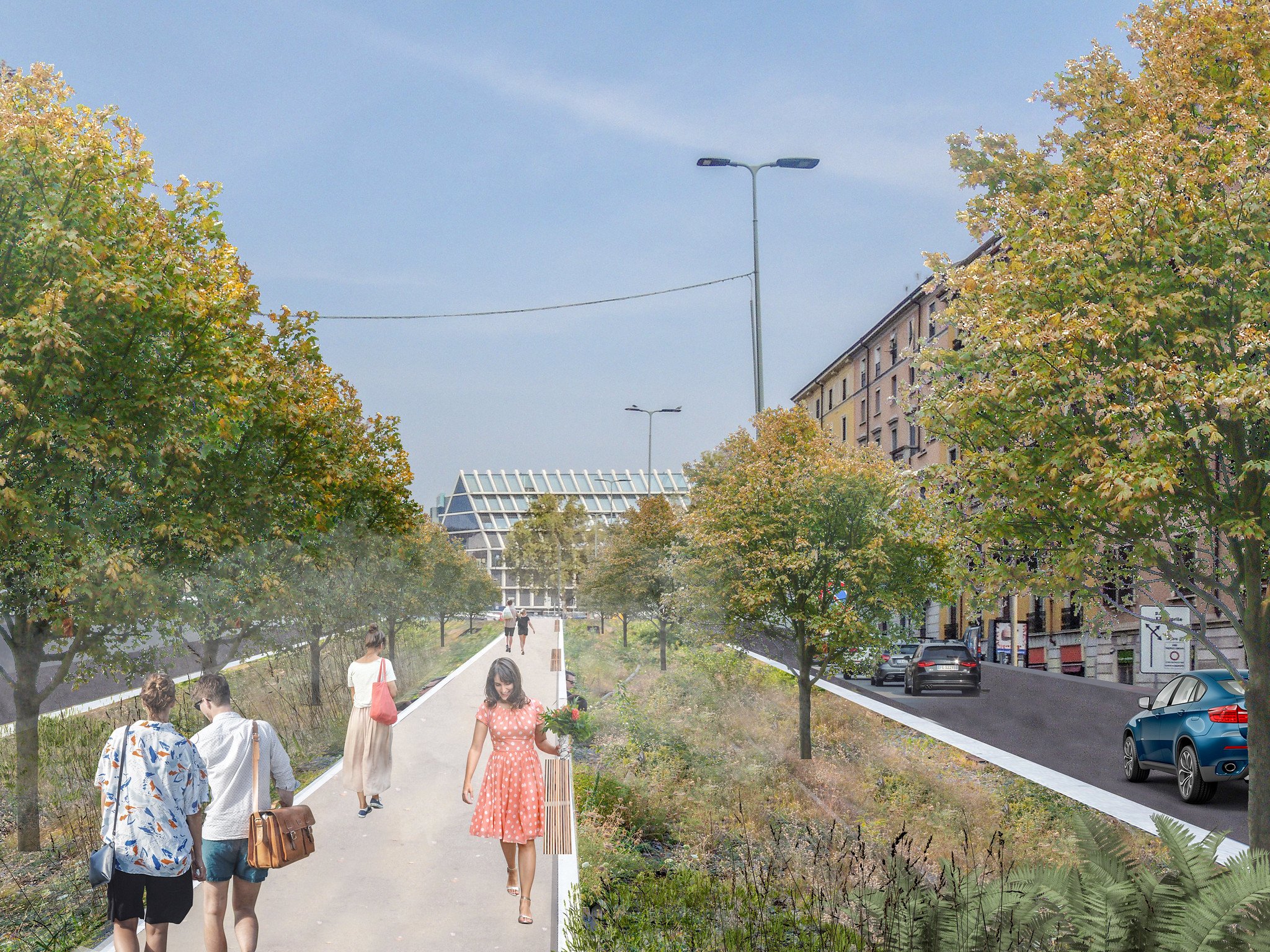THE ADVENTURES OF THE LITTLE RED RIDING BAG
LOCATION: WORLDWIDE YEAR: 2015 - PRESENT
TEAM: MANOLIS VENIERAKIS
PUBLICATIONS: FACEBOOK INSTAGRAM
While searching for figures to use in architectural visualizations, I came across figure #174 from Skalgubbar collection or "The Little Red Riding Bag" as I started calling her.
It was really fascinating for me, that both corporate architecture offices and students use the same scale figures for their images. Competition entries, large scale developments, small student projects, and expensively acquired renders become equal due to the common software used to produce them, similar material libraries and scale figures used. I started collecting all the renders that included the Little Red Riding Bag, that became an obsession and a side project, so I decided to create a Facebook page to share her adventures. The page soon became viral in the architecture community across the globe and followers shared both images they found online and their own visualizations. The adventures seem endless and they developed into an on-going research project.
However, this figure is only one of the total of figures copied and mutiplied over and over, showing a continuous trend between architects. From sketches and stencil figures used on line drawings, until the Magritte man used in O.M.Ungers' drawings and Hopper's and Hockney's heroes migrating in collages, visualizations showcase how architects imagine and project the designed lifestyle. These products have always looked similar, but the contemporary convenience, offered by technology, reduces further the architectural representation.
Bernard Tschumi was problematizing about the reduced architectural representation more than twenty years ago, pointing out the lack of depth in this process:
“However precise and generative plans, sections, and axonometrics may be, each implies a logical reduction of architectural thought to what can be shown, to the exclusion of other concerns. They are caught in a sort of prison-house of architectural language, where 'the limits of my language are the limits of my world'. Any attempt to go beyond such limits, to offer another reading of architecture, demands the questioning of these conventions.”
Tschumi, Bernard. 1994. The Manhattan Transcripts: Theoretical Projects. New York: St. Martin's Press. p. XX
Disclaimer: All of the above images are copyrighted to their respective owners







































